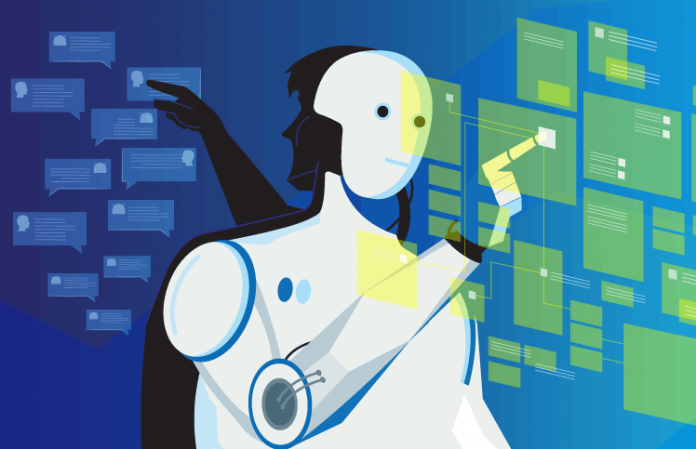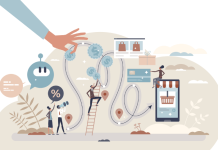
In this final post of our chatbot series, we’ve asked the panel members to give us glimpse into the trends and developments in chatbot technology that will positively impact the customer experience. They also offer advice on how to ensure that your chatbot solution aligns with your CX and business objectives.
Be sure to check out Parts 1-3 of this series:
Common Applications and Misconceptions
Internal Use and Adoption
Overcoming Customer Reluctance
The experts who participated in this Q&A series are: Chris Connolly, Vice President Product Marketing, Genesys; Emma Furlong, Lead Content Strategist, Clinc; Dave Hoekstra, WFM Evangelist, Teleopti; Scott Kolman, VP of Product & Corporate Marketing, Five9; Alok Kulkarni, CEO, Cyara; Jen Snell, VP of Product Marketing for Intelligent Self-Service, Verint; Shellie Vornhagen, SVP Marketing and North American Sales, Astute; and Charly Walther, VP of Product and Growth, Gengo.ai.
What are the key trends and developments in chatbot technology that contact center leaders should look for to improve the customer experience?
 CHRIS CONNOLLY: 1. The technology behind bots is not limited to text/digital channels. Smart vendors are also building technology that enables conversations to happen with bots on voice channels using a common management system. For example, bots created for the web can also be used on a business 800-number or smart speaker.
CHRIS CONNOLLY: 1. The technology behind bots is not limited to text/digital channels. Smart vendors are also building technology that enables conversations to happen with bots on voice channels using a common management system. For example, bots created for the web can also be used on a business 800-number or smart speaker.
2. Bot experiences are not limited to conversational dialog—they can also include embeddable “micro-applications” that improve the user experience by providing rich content experiences.
3. AI technology has expanded beyond chat and voice bots. There now exists technology driven by machine learning that matches the customer with the right experience (human or machine) based on collected journey data and digital footprints. These insights commence well before the customer has touched the brand, and extend far beyond the immediate customer communication.
 EMMA FURLONG: There have been significant developments in the machine learning and natural language processing research communities over the past few years, but one of the key innovations is around crowdsourcing for data curation. Soliciting utterances from the crowd provides a quick and diverse data set to train AI models on, much more effectively than other data collection methods. Using this approach significantly cuts down on chatbot development time while simultaneously driving a better user experience.
EMMA FURLONG: There have been significant developments in the machine learning and natural language processing research communities over the past few years, but one of the key innovations is around crowdsourcing for data curation. Soliciting utterances from the crowd provides a quick and diverse data set to train AI models on, much more effectively than other data collection methods. Using this approach significantly cuts down on chatbot development time while simultaneously driving a better user experience.
 ALOK KULKARNI: It’s tempting to think of chatbots as the “next generation” of customer engagement. I think that all-in approach can be risky. Businesses may be ready to hop on the AI and chatbot train, but many customers are still hesitant. What I’ve noticed is this: Brands that have successfully implemented chatbots have taken a hybrid approach, with AI helping to make human interactions more effective and more impactful. They seamlessly integrate them into the customer journey by defining realistic operating goals for the chatbot, and then ensuring continuity with their other customer engagement channels.
ALOK KULKARNI: It’s tempting to think of chatbots as the “next generation” of customer engagement. I think that all-in approach can be risky. Businesses may be ready to hop on the AI and chatbot train, but many customers are still hesitant. What I’ve noticed is this: Brands that have successfully implemented chatbots have taken a hybrid approach, with AI helping to make human interactions more effective and more impactful. They seamlessly integrate them into the customer journey by defining realistic operating goals for the chatbot, and then ensuring continuity with their other customer engagement channels.
 JEN SNELL: The vanguard of artificial intelligence (AI) in customer experience has of course been in customer service, where it went from cost-saving automation to making the customer service center a strategic source of data, customer information and business strategy.
JEN SNELL: The vanguard of artificial intelligence (AI) in customer experience has of course been in customer service, where it went from cost-saving automation to making the customer service center a strategic source of data, customer information and business strategy.
We’re now seeing AI-powered chatbots and IVAs move to more direct customer engagements, especially as customers have begun to expect the convenience of automated interactions. Our clients have seen the biggest direct payoff as far as ROI on AI investments in assistants that are actually involved in sales, and for a simple a reason: AI agents actually ask the questions that create upsell and cross-sell opportunities.
Over the next year, we expect AI assistants to move even further toward the front lines of customer experience, driven as much by customer wants as much as business opportunities. At this point, companies need to be investing in AI customer experiences not to get ahead of the curve, but to just stay relevant.
 CHARLY WALTHER: The rise of combined chatbot and human-in-the-loop solutions will have a drastic effect on the customer experience. The additional learnings that human-in-the-loop provides will result in chatbots that are more confident in their own answers. This will make them more accurate, more informative, and better able to discern when a support agent might be needed.
CHARLY WALTHER: The rise of combined chatbot and human-in-the-loop solutions will have a drastic effect on the customer experience. The additional learnings that human-in-the-loop provides will result in chatbots that are more confident in their own answers. This will make them more accurate, more informative, and better able to discern when a support agent might be needed.
As this technology is ever more widely adopted, customers will come to see excellent service from chatbots as the norm. To deal with these heightened expectations, it’s important that your data covers both a wide range of questions and a variety of ways to communicate with them. Fortunately, another byproduct of the improvement in chatbot technology has been an ecosystem of third-party providers who are able to either annotate your data or build a custom solution for you. When they’re effectively utilized, these specialists can provide you with a dramatic ROI and help you to avoid falling foul of a gap between customer expectation and chatbot reality.
What advice can you offer for matching chatbot solution options with business requirements?
 CHRIS CONNOLLY: Come and talk to us—we have experts on staff and great customers willing to showcase what they’ve learned.
CHRIS CONNOLLY: Come and talk to us—we have experts on staff and great customers willing to showcase what they’ve learned.
 EMMA FURLONG: The most obvious business requirement for a chatbot solution is to deliver ROI. The contact center is one of the use cases with the highest potential for massive ROI due to the fact that it can replace/augment contact center workers, and reduce handle time. This translates to massive cost savings in the contact center, and provided that the chat experience is positive, the business value is clear and immense.
EMMA FURLONG: The most obvious business requirement for a chatbot solution is to deliver ROI. The contact center is one of the use cases with the highest potential for massive ROI due to the fact that it can replace/augment contact center workers, and reduce handle time. This translates to massive cost savings in the contact center, and provided that the chat experience is positive, the business value is clear and immense.
 SCOTT KOLMAN: Start with your more repetitive questions and interactions as your initial candidates for a chatbot. Look for activities that have been performed quite frequently and have well defined processes, and answers. From there, make a chatbot interaction an option, while presenting up front how the customer can engage with a live agent—if desired. As customers gain experience engaging with chatbots and find their issues easily resolved, they will increase their openness to interacting with a chatbot in the future.
SCOTT KOLMAN: Start with your more repetitive questions and interactions as your initial candidates for a chatbot. Look for activities that have been performed quite frequently and have well defined processes, and answers. From there, make a chatbot interaction an option, while presenting up front how the customer can engage with a live agent—if desired. As customers gain experience engaging with chatbots and find their issues easily resolved, they will increase their openness to interacting with a chatbot in the future.
 ALOK KULKARNI: Set clear goals that match both your business objectives, as well as your customers’ objectives. Here’s a real-world case study from a business software company that offers support online and via their contact center. Typically, customers start with online support and when that fails, they call the contact center. Knowing that many customers actually prefer to resolve their issues without calling, the contact center team focused on how they could better serve those customers with self-help content. They hypothesized that chatbots could strengthen the experience for customers, and therefore, they focused their AI deployment on customizing support conversations with the aim of increasing the rate of self-service completion. The result was successful, achieving resource savings for the company, while also maintaining a strong customer NPS. In fact, their business was then able to apply the resources savings to improving other aspects of their CX.
ALOK KULKARNI: Set clear goals that match both your business objectives, as well as your customers’ objectives. Here’s a real-world case study from a business software company that offers support online and via their contact center. Typically, customers start with online support and when that fails, they call the contact center. Knowing that many customers actually prefer to resolve their issues without calling, the contact center team focused on how they could better serve those customers with self-help content. They hypothesized that chatbots could strengthen the experience for customers, and therefore, they focused their AI deployment on customizing support conversations with the aim of increasing the rate of self-service completion. The result was successful, achieving resource savings for the company, while also maintaining a strong customer NPS. In fact, their business was then able to apply the resources savings to improving other aspects of their CX.
 JEN SNELL: The technology is not new—find a chatbot solution that has been proven to deliver meaningful results in an enterprise environment.
JEN SNELL: The technology is not new—find a chatbot solution that has been proven to deliver meaningful results in an enterprise environment.
 SHELLIE VORNHAGEN: My advice is to just get started! Don’t wait until you have the “perfect plan.” It’s fine to initially build out just a few use cases, and then use an iterative process to add more over time.
SHELLIE VORNHAGEN: My advice is to just get started! Don’t wait until you have the “perfect plan.” It’s fine to initially build out just a few use cases, and then use an iterative process to add more over time.
Another element to keep in mind is flexibility: Make sure the core functionality of your chatbot can be built once, but deployed on multiple channels with minimal modifications so you can maximize the value of the bot. And remember that key technologies behind chatbots, like NLP and AI, are still rapidly evolving, so look for a flexible solution that can leverage multiple technologies as they continue to change.
 CHARLY WALTHER: There are several different approaches to building out your chatbot. These range from a generic off-the-shelf solution to a more expansive, customized offering built on hundreds of intent variations and perhaps some human-in-the-loop flows. Regardless of your choice and level of commitment, it’s essential that you have target KPIs for the following questions:
CHARLY WALTHER: There are several different approaches to building out your chatbot. These range from a generic off-the-shelf solution to a more expansive, customized offering built on hundreds of intent variations and perhaps some human-in-the-loop flows. Regardless of your choice and level of commitment, it’s essential that you have target KPIs for the following questions:
- How often do you expect your chatbot to produce the right answer?
- What is your target NPS?
- How often is it acceptable for the chatbot to reply with “I don’t know” or “have a look at our FAQ?”
Once you have solid answers to all these questions, you can begin to trial generic approaches to chatbot implementation. It’s important to evaluate the strengths and weaknesses of these options thoroughly. This will allow you to have more useful conversations with service providers to see if further investment makes sense—and whether it will enable you to make significant progress toward your KPIs.



